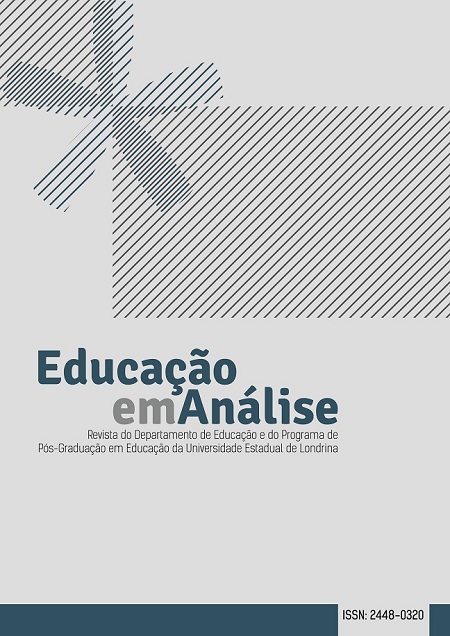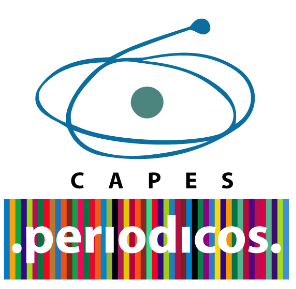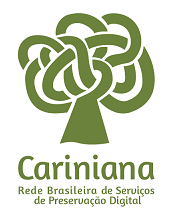The contributions of reading strategies to understand na illustraded book
DOI:
https://doi.org/10.5433/1984-7939.2020v5n2p389Keywords:
Reader training, Reading strategies, Children's literature, Picture bookAbstract
Given the importance of reader training, we intend to present in this article a practical proposal for the use of reading strategies to understand the illustrated book A vaca que botou um ovo (CUTBILL; 2010). The activity reported is a clipping of doctoral research whose objective is to investigate the role of the other "reading mediators" in the formation of the literary reader and was developed for six students in the 5th year of elementary school at a municipal school in Porto Velho / RO in June 2019. The dialogue based on the philosophy of language (BAKHTIN, 2003; VOLOCHINOV, 2017) was the methodological choice for this class, whose objective is to present possibilities of pedagogical practices for the formation of the literary reader. The results demonstrate the importance of creating conditions for children to have access to the literary text as well as to develop the necessary behaviors for the act of reading, among which we highlight the use of reading strategies.Downloads
References
BAJARD, Elie. Ler e dizer: compreensão do texto escrito. São Paulo: Cortez, 2014.
BAKHTIN, Mikhail. Estética da criação verbal. Tradução Paulo Bezerra. 4. ed. São Paulo: Martins Fontes, 2003.
CUTBILL, Andy. A vaca que botou um ovo. Tradução Lenice Bueno. Ilustração Russel Ayto. São Paulo: Salamandra, 2010.
DAVIS, C. Lynn; SOUZA, Renata Junqueira. Entendendo textos: estratégia para a sala de aula. Leitura: Teorias e Prática, Campinas, v. 27, n. 53, p. 31-37, 2009.
FOUCAMBERT, Jean. A leitura em questão. Tradução Bruno Charles Magne. Porto Alegre: Artmed, 1994.
FOUCAMBET, Jean. Modos de ser leitor: aprendizagem e ensino da leitura no ensino fundamental. Curitiba: Editora UFPR, 2008.
GIROTTO, Cyntia Graziella Guizelim Simões; SOUZA, Renata Junqueira. Estratégias de leitura: para ensinar alunos a compreender o que leem. In: GIROTTO, Cyntia Graziella et. al. (org.). Ler e compreender: estratégias de leitura. Campinas: Mercado das Letras, 2010. p. 45-114.
GIROTTO, Cyntia Graziella Guizelim Simões; SOUZA, Renata Junqueira. Estratégias de leitura: uma alternativa para o início da educação literária. Álabe, Almeria, n. 10, p. 1- 23, dez. 2014.
HUNT, Peter. Crítica, teoria e literatura infantil. Tradução Cid Knipel. São Paulo: Cosac Naify, 2010.
JOLIBET, Josette; JACOB, Jeannette e colaboradores. Além dos muros da escola: a escrita como ponte entre alunos e comunidade. Tradução Ana Maria Netto Machado. Porto Alegre: Artmed, 2006.
KLEIMAN, Angela. Texto e leitor: aspectos cognitivos da leitura. Campinas: Pontes, 1989.
LINDEN, Sophie Van der. Para ler o livro ilustrado. Tradução Dorothé de Bruchard. São Paulo: Sesi, 2011.
SOLÉ, Isabel. Estratégias de leitura. Tradução Cesar Coll. 6. ed. Porto Alegre: Artmed, 1998.
VOLOCHÍNOV, Valentin. A construção do enunciado e outros ensaios. Tradução João Wanderley Geradi, Valdemir Miotello. São Carlos: Pedro & João editores, 2013.
VOLÓCHINOV, Valentin. Marxismo e filosofia da linguagem: problemas fundamentais do método sociológico na ciência da linguagem (1929). Tradução Sheila Grillo, Ekaterina Vólkova Américo. São Paulo: Editora 34, 2017.
Downloads
Published
How to Cite
Issue
Section
License
Copyright (c) 2020 Educação em Análise

This work is licensed under a Creative Commons Attribution 4.0 International License.
Os artigos publicados na Revista Educação em Análise estão sob a Licença Creative Commons Atribuição 4.0 Internacional, garantindo Acesso Aberto. Deste modo, os autores mantêm os direitos autorais de seus trabalhos e, em caso de republicação, solicita-se que indiquem a primeira publicação nesta revista. Essa licença permite que qualquer pessoa leia, baixe, copie e compartilhe o conteúdo, desde que a devida citação seja feita. Além disso, autoriza a redistribuição, adaptação e criação de obras derivadas em qualquer formato ou meio, incluindo uso comercial, desde que a atribuição à revista seja mantida.
A revista se reserva o direito de efetuar, nos originais, alterações de ordem normativa, ortográfica e gramatical, com vistas a manter o padrão culto da língua e a credibilidade do veículo. Respeitará, no entanto, o estilo de escrever dos autores. Alterações, correções ou sugestões de ordem conceitual serão encaminhadas aos autores, quando necessário.
As opiniões emitidas pelos autores dos artigos são de sua exclusiva responsabilidade.
























